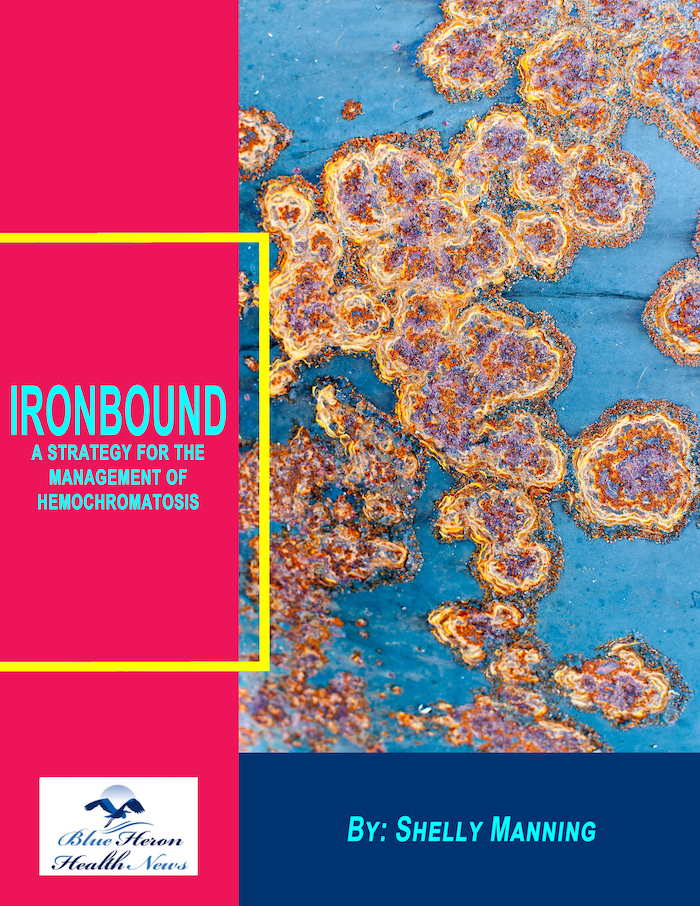
Ironbound™ A Strategy For The Management Of Hemochromatosis By Shelly Manning The 5 superfoods explained by Shelly Manning in this eBook play an important role in reducing the levels of HCT. The absorption of the excessive amount of iron by the genes of HCT can be blocked by these superfoods. In this way, the information provided in this eBook can help in resolving the problem of excess iron in your body naturally without any risk of side effects.
How is hemochromatosis treated?
Hemochromatosis is primarily treated by reducing the body’s iron levels to prevent further complications from iron overload. The treatment approach depends on the severity of the condition and the presence of any complications. The mainstay of treatment includes the following:
1. Phlebotomy (Therapeutic Blood Removal)
- Primary Treatment: Phlebotomy is the most common and effective treatment for hemochromatosis. It involves regularly removing blood from the body, similar to donating blood. Each session typically removes about 500 milliliters of blood, which contains approximately 200-250 milligrams of iron.
- Frequency: Initially, phlebotomy may be performed once or twice a week until iron levels normalize. After achieving the target levels, maintenance phlebotomies are done less frequently (every few months) to keep iron levels stable.
- Monitoring: Regular monitoring of serum ferritin (a marker of iron storage) and transferrin saturation is necessary to guide the frequency and duration of phlebotomy.
2. Chelation Therapy
- Alternative to Phlebotomy: For patients who cannot tolerate phlebotomy due to anemia or other medical conditions, iron chelation therapy may be used. Chelation involves taking medication that binds to excess iron and facilitates its excretion from the body, usually through urine or stool.
- Common Chelating Agents:
- Deferoxamine (Desferal): Administered via subcutaneous or intravenous infusion.
- Deferasirox (Exjade, Jadenu): An oral chelator that is easier for patients to manage compared to deferoxamine.
- Deferiprone (Ferriprox): Another oral chelator used in certain cases.
- Considerations: Chelation therapy is typically reserved for patients who cannot undergo phlebotomy, as it is generally less effective and more expensive.
3. Dietary Modifications
- Iron Intake: Patients are often advised to reduce their intake of dietary iron. This includes limiting red meat, organ meats, and iron-fortified foods.
- Avoidance of Iron Supplements: Patients should avoid taking iron supplements or multivitamins containing iron unless specifically directed by their healthcare provider.
- Limiting Vitamin C: Vitamin C can increase iron absorption, so patients are usually advised to avoid taking vitamin C supplements.
- Alcohol Moderation: Alcohol can increase iron absorption and exacerbate liver damage, so it should be consumed in moderation or avoided entirely, especially in those with liver disease.
4. Monitoring and Management of Complications
- Liver Function: Regular monitoring of liver function tests and imaging studies (e.g., liver ultrasound or MRI) is important to assess for liver damage, including cirrhosis or liver cancer. Patients with cirrhosis may need regular surveillance for liver cancer.
- Cardiac Monitoring: For those with cardiac involvement, regular echocardiograms and ECGs may be necessary to monitor heart function.
- Endocrine Function: Patients should be regularly assessed for complications such as diabetes, hypogonadism, and hypothyroidism, with appropriate hormone replacement therapies provided as needed.
5. Genetic Counseling
- Family Screening: Since hemochromatosis is a genetic disorder, family members of affected individuals may be offered genetic testing to determine if they carry the HFE gene mutation. Early detection allows for preventive measures before significant iron overload occurs.
Sources:
- National Institutes of Health (NIH): Detailed information on the treatment and management of hemochromatosis (NIH – Hemochromatosis).
- Cleveland Clinic: Provides a comprehensive overview of treatment options for hemochromatosis (Cleveland Clinic – Hemochromatosis).
- Mayo Clinic: Discusses the treatment strategies and ongoing management of hemochromatosis (Mayo Clinic – Hemochromatosis).
In summary, the treatment of hemochromatosis is centered around reducing iron levels in the body through phlebotomy or chelation therapy, along with dietary modifications and careful monitoring for complications. Early detection and consistent treatment can help prevent or mitigate the severe effects of iron overload.
Ironbound™ A Strategy For The Management Of Hemochromatosis By Shelly Manning The 5 superfoods explained by Shelly Manning in this eBook play an important role in reducing the levels of HCT. The absorption of the excessive amount of iron by the genes of HCT can be blocked by these superfoods. In this way, the information provided in this eBook can help in resolving the problem of excess iron in your body naturally without any risk of side effects.
